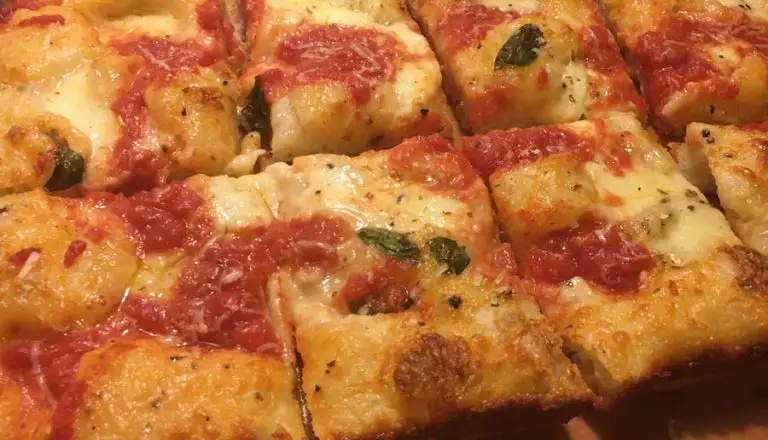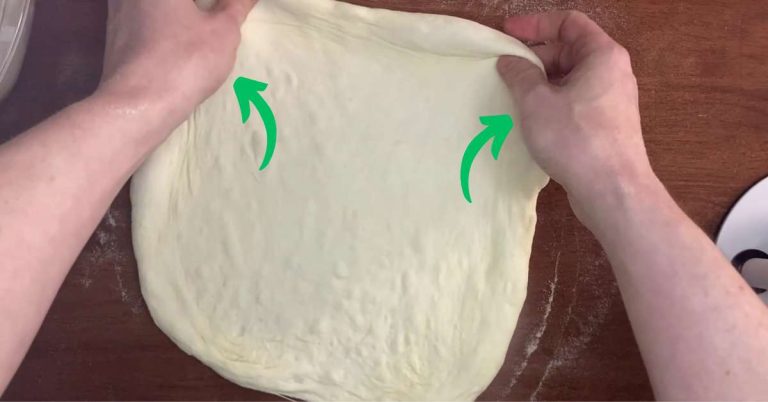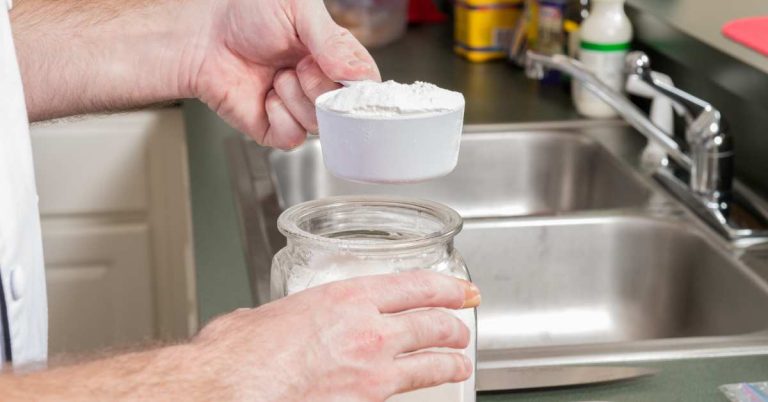Why Is My Pizza Dough Not Rising? How To Make Pizza Dough Rise Every Time
You know the feeling. You’ve put your heart and soul into making homemade pizza dough, expecting it to rise into a glorious, fluffy base for your pizza making pleasure. But instead, it sits there, stubbornly flat, as if mocking your efforts.
So what’s stopping your pizza dough from rising? Here are the top most likely reasons from someone who knows:
- Dead Yeast: The most common reason why your pizza dough is not rising is dead yeast. When yeast expires, it can’t activate and produce the gas which causes pizza dough to rise.
- It’s Too Cold: The second most common reason why pizza dough doesn’t rise is that it’s too cold. Yeast needs a warm environment to activate, so if the temperature is too low, your pizza dough will not rise.
- Lack Of Gluten Development: When you knead pizza dough (or let the dough rest overnight), gluten develops. These gluten pockets are what trap gas and air and inflate the dough. So if there is no gluten, your pizza dough won’t rise. Next time, knead more and let it rest longer.
- You Didn’t Wait Long Enough: Pizza dough takes time to rise, sometimes several hours or more. So unless you used a whole packet of yeast in a single batch, you need to allow the dough at least a few hours to rise.
- Not Enough Yeast: This is a rare cause, because typically people use too much yeast. You need at least 0.10% yeast, or around 0.5 grams per 550 grams, to make pizza dough rise. But to make the dough rise faster, use at least 1-3 grams per batch.
- More Hydration: Pizza dough with more water is lighter and expands more easily. Try my 70% hydration pizza dough recipe (or my poolish pizza dough starter) for a great rise every time.
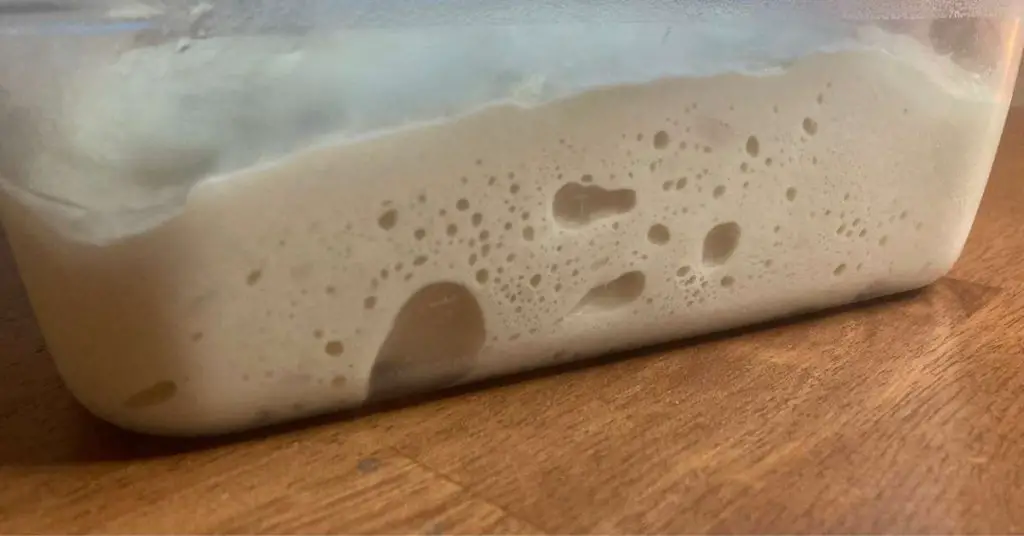
Pizza Dough: More Than Just Flour and Water
The Science Behind Pizza Dough Rise
At its core, pizza dough is simple – it’s just flour, water, yeast, and a bit of salt. But when it comes to getting that dough to rise, there’s more than meets the eye. Yeast, the magical ingredient in this scenario, is responsible for making your pizza dough rise.
This microscopic fungus feasts on the sugars in the flour, burping out carbon dioxide in the process. This gas gets trapped in the gluten network, causing the dough to inflate, giving you that desired rise. However, if your pizza dough isn’t rising, maybe your yeast is on strike.
Factors Influencing the Rise of Pizza Dough
So, what makes yeast decide to work or take a day off? Temperature plays a huge role here. Yeast loves a cozy, warm environment. Too cold, and it goes dormant. Too hot, and you might as well be holding a funeral for your yeast.
Another critical factor is the gluten network, which is developed through kneading. If you don’t knead your dough enough, the gluten network won’t be strong enough to trap the gas, and your dough will remain as flat as a pancake.
| Factor | Description | Impact on Dough Rise |
|---|---|---|
| Yeast | A microscopic fungus that ferments sugars in flour. | Responsible for CO2 production; essential for rising. |
| Temperature | Optimal range for yeast activity. | Too cold: yeast goes dormant; too hot: yeast dies. |
| Gluten Network | Formed through kneading; traps CO2. | Insufficient kneading leads to weak structure. |
| Water Hydration | Amount of water in dough. | Affects yeast mobility and gluten network formation. |
| Flour Type | Different flours have varying protein and moisture. | Influences gluten strength and fermentation process. |
| Salt Concentration | Regulates yeast activity and dough flavor. | Higher salt slows down fermentation; too little speeds it up. |
| Sugar Content | Provides food for yeast. | Too much sugar can overactivate yeast or impact flavor. |
| Fermentation Time | Duration allowed for dough to rise. | Shorter time can result in under-risen dough. |
| Environmental Humidity | Moisture in the air around the dough. | High humidity can increase dough hydration. |
| Dough Temperature Control | Consistency in temperature during preparation. | Variations can affect yeast activity and gluten development. |
| Altitude | Elevation at which dough is prepared. | Higher altitudes can speed up the rising process. |
| Ingredient Quality | Freshness and quality of yeast and flour. | Old yeast may not activate; poor-quality flour affects gluten structure. |
Top Reasons Why Your Pizza Dough Is Not Rising
Ineffective Yeast: A Common Culprit
One of the most common reasons why your pizza dough might not rise is the yeast. Maybe it’s old or was stored improperly. Dry yeast has a shelf-life, and if it’s past its prime, it won’t do its job. And let’s not forget about the water temperature. Yeast needs warm water to wake up from its slumber. Use hot water, and you’ll send your yeast to the afterlife.
Temperature Troubles: Use Warm Water In A Warm Room
If your dough is too cold, don’t expect much action. Yeast needs an optimal rising temperature to get going. Conversely, if your dough is sitting in a spot that’s too warm, you’re speeding up the fermentation process too much, leading to other issues down the road.
Knead The Dough: An Art and Science
Kneading the dough develops the gluten network necessary for a good rise. If you’re skimping on the kneading, you’re essentially sabotaging your own pizza dough. Proper kneading ensures that the dough has enough strength and elasticity to rise properly.
Alternatively, you can simply let the dough rest overnight. During this time (approximately 12-24 hours), gluten will develop automatically through a process known as autolysis. This will ensure you have the perfect amount of gluten for a proper pizza dough rise every time.
Give The Dough Enough Time To Rise Properly
Sometimes, your dough just needs more time to rise. If you’re peeking under the cloth every five minutes, you’re not giving the yeast a chance to do its thing. Allow enough time for rising, and you will be rewarded.
In my experience, pizza dough needs at least a few hours to rise, and even more time to develop texture and flavor. Give your pizza dough enough time to rise and even longer to proof for the best results.
Other Common Reasons For Pizza Dough Not Rising
Yeast’s Quirks: A Tiny Ingredient with Big Impact
It’s not just about whether your yeast is alive; it’s about how you’re treating it. Mixing the dough properly, ensuring the yeast is evenly distributed, and using warm (not hot) water can make all the difference.
Yeast is fairly resilient, but to play it safe, I always mix my water, flour, and honey (if necessary) first and let it sit for several minutes before mixing with flour and salt. This gives the yeast time to activate and gain strength before being mix with salt or other ingredients that can slow down the rising process.
Temperature of the Dough: Finding the Sweet Spot
You might find that your dough isn’t rising simply because the temperature in your kitchen is playing games with your dough.
The dough needs a warm (not hot, not cold) spot to rise properly. This temperature balance can be tricky to achieve, especially in kitchens that are prone to drafts or temperature fluctuations. In most cases, normal room temperature should be just fine.
| Temperature (°F) | Low Yeast (e.g., 0.2% of flour weight) | Medium Yeast (e.g., 1-2% of flour weight) | High Yeast (e.g., 3-5% of flour weight) |
|---|---|---|---|
| 50-60 | 18-24 hours+ | 12-16 hours | 8-10 hours |
| 61-70 | 12-18 hours | 8-12 hours | 4-6 hours |
| 71-80 | 6-12 hours | 4-8 hours | 2-4 hours |
| 81-90 | 4-6 hours | 2-4 hours | 1-2 hours |
| 91-100 | 2-4 hours | 1-2 hours | 30-60 minutes |
Troubleshooting Tips to Make Pizza Dough Rise
Reviving the Yeast: A Critical Step
So, your pizza dough is just sitting there, not rising. Before you toss it out, consider this: maybe the yeast needs a little more love. If you suspect the yeast is the problem, try an activation test. Dissolve a bit of sugar in lukewarm water (not hot, not cold), add your yeast, and give it a bit of time.
If it starts to froth and bubble, congratulations, your yeast is alive! If not, well, it’s time to get some fresh yeast.
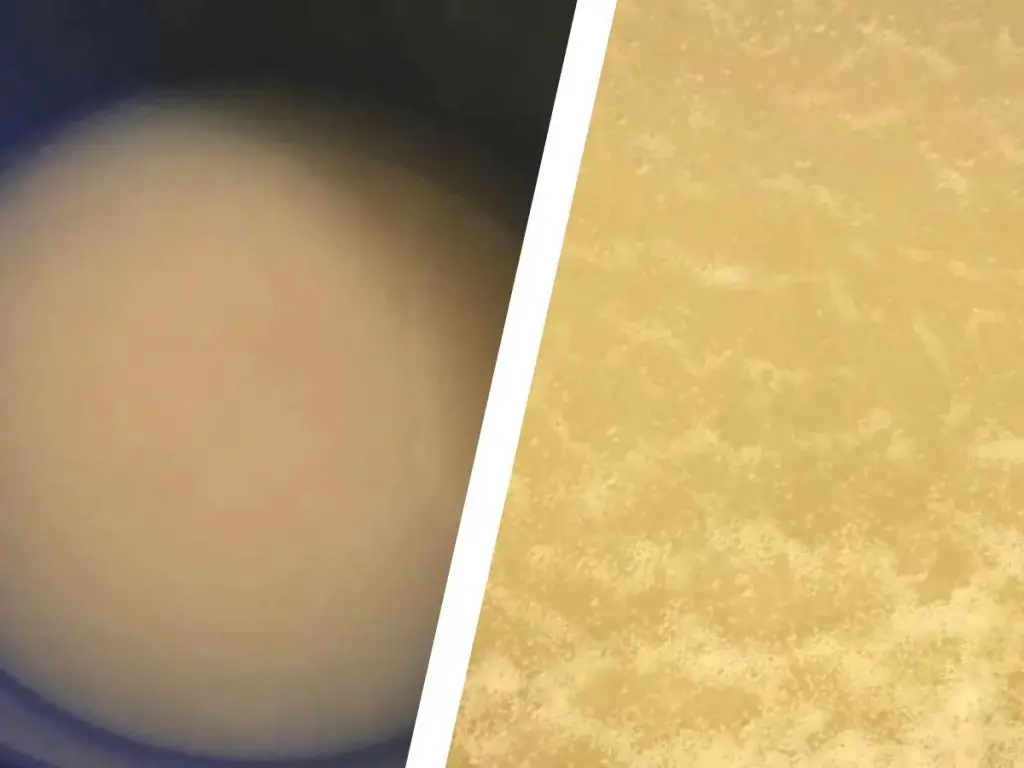
Optimizing Dough Temperature: Not Too Hot, Not Too Cold
Remember Goldilocks? Your dough is kind of like her; it likes things ‘just right.’ If your dough is cold, find a warm spot for it to rise. This could be in a slightly warmed oven (turned off, of course) or just a cozy corner of your kitchen. The optimal rising temperature can make a significant difference in the behavior of your yeast and the rise of your dough.
Use a notebook and take note of where your dough rises best (or doesn’t rise at all). It can also help to mark the levels on the container you’re using so you can measure how much the dough rises in one place compared to another. This will help tremendously the next time you make pizza dough.
How To Knead The Dough: Not Just Push and Fold
If you didn’t knead the dough enough like we mentioned before, all is not lost. You can try to rescue your dough by giving it a bit more elbow grease. Kneading develops the gluten network essential for trapping the gases that make the dough rise. It’s not just about pushing and folding; it’s about developing that perfect pizza dough consistency.
Keep in mind, if you knead the dough again, it will knock out any air and gas that built up from before, so you’re essentially starting over.
Adjusting Rising Times: Patience Pays Off
Sometimes, the solution is as simple as giving your dough more time. Rising time can vary greatly depending on the temperature and humidity of your kitchen. If the dough isn’t rising, let it sit a bit longer. Be patient, and give your dough the time it needs to puff up gracefully.
Add Sugar or Honey To The Recipe
Yeast needs fuel to activate and cause your dough to rise, but sometimes there simply isn’t enough in the flour alone. In this case, consider adding honey or sugar to your pizza dough recipe for an extra boost.
Just be aware that too much sugar will cause your yeast to overgrow and negatively affect the taste. This is why it’s always best to follow a tried and true pizza dough recipe to avoid problems from the start.
Advanced Tips for Perfect Pizza Dough Every Time
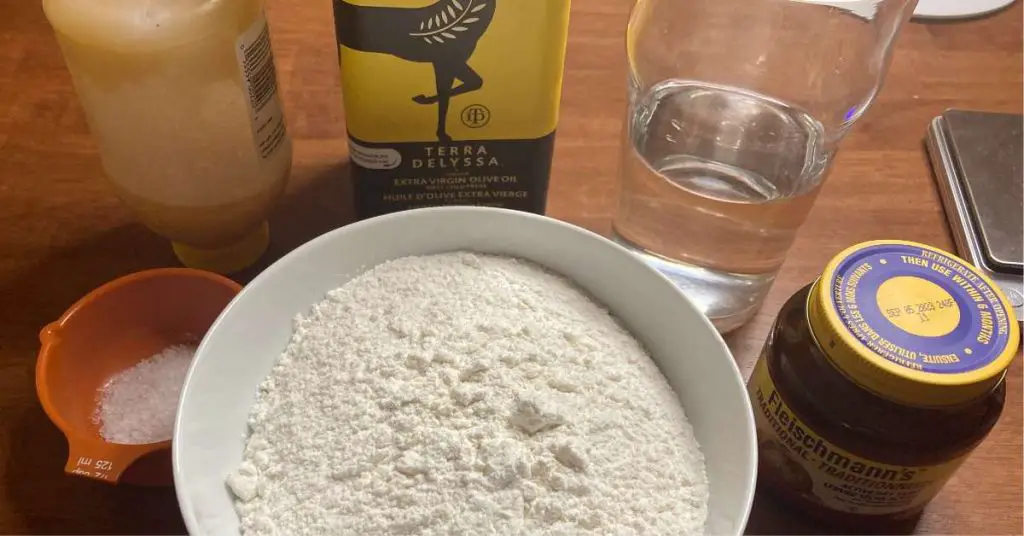
Fine-Tuning Ingredients and Environment
Making perfect pizza dough isn’t just about following a recipe. It’s about understanding how each ingredient interacts and how your kitchen environment affects the dough. For instance, the type of flour you use can impact your dough. Neapolitan-style pizza flour (also known as Tipo 00 flour) might give you a different texture compared to your regular all-purpose flour. And don’t forget about the hydration levels – too much or too little water can significantly affect your dough’s rise.
In general, the more gluten and protein in your dough, the better and faster it will rise. This is because stronger gluten traps more gas that causes the dough to rise.
Expert Techniques for a Superb Pizza Crust
If you’re aiming for that perfect pizza crust, consider experimenting with slow fermentation. This technique involves leaving the dough to rise slowly, often in a refrigerated environment, which can enhance the flavor and texture of your crust. It’s all about controlling the rising temperature and the environment to get your dough to rise properly.
If you want a pizza dough recipe that’s all about a long and slow fermentation, try my 70% hydration pizza dough recipe here.
Conclusion: Embracing the Pizza Dough Journey
Remember, making pizza dough is a journey filled with trial and error. Don’t get discouraged if your dough doesn’t rise on the first try. Each batch of dough is an opportunity to learn and improve. So, keep experimenting, adjusting, and most importantly, keep baking. With patience and practice, you’ll soon be making pizza dough that rises beautifully every time.
Remember, the key to great pizza dough is understanding the nuances of yeast fermentation, dough temperature, and gluten development. With these tips in mind, you’re well on your way to becoming a pizza dough master.
FAQs
What if my pizza dough doesn’t rise at all?
If your dough hasn’t risen at all, check the yeast freshness and the dough temperature. Sometimes, starting over with fresh yeast and ensuring the right environmental conditions can make all the difference.
How can I make my pizza dough rise faster?
To speed up the rising process, place the dough in a warm, draft-free area. You can also use more yeast, but be aware that this might affect the flavor of your dough.
How long should I knead pizza dough?
Typically, you should knead pizza dough for about 10-15 minutes by hand, or until it reaches a smooth and elastic consistency.

